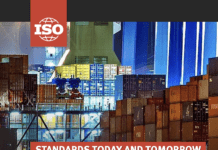
Safety and security tips from Jaime Lopez-Aranda, senior security manager intelligence & security assistance, International SOS.
In light of the recent travel warnings for Mexico, Prevue checked in with International SOS security expert Jaime Lopez-Aranda on group safety guidelines. Here is his advice on safety in Mexico and on risk mitigation measures in general.
Prevue: What areas in Mexico are higher targets for crime?
Lopez-Aranda: “We currently assess the majority of Mexico to be a medium risk location, including the largest cities and tourist destinations. However, there are some areas in Mexico that have higher risk levels, including the states of Colima, Guerrero, Michoacan, Sinaloa, Tamaulipas, and Zacatecas. This is due to increased rates of robbery, homicide, carjacking, kidnapping and gang violence. If there is a need to travel to these areas, you should do so only for essential purposes and closely coordinate with trusted local contacts and resources. Planners can check the U.S. Department of State’s Travel Advisory Mexico for updates.”
Prevue: Is Mexico ultimately safe to visit? What security measures has Mexico taken following the recent incidents involving U.S. citizens?
Lopez-Aranda: “It is relatively safe to travel to specific travel destinations in Mexico, such as tourist destinations and major urban centers like Mexico City, Guadalajara and Monterrey. However, planners need to research locations and avoid trouble spots. Attendees should be aware of their surroundings, as petty crime remains a concern even in medium risk cities. The Mexican government has not announced special measures as a result of the recent incidents.”
Prevue: What should meeting planners research ahead of any trip to ensure a destination is safe for groups?
Lopez-Aranda: “It is essential for meeting planners to research the potential risks of the destination, have a strong understanding of the region and liaise whenever possible with trusted local providers and contacts. Regardless of whether the destination is high risk or low risk, a contingency plan should be in place in the event that attendees encounter a medical or security emergency. It is also crucial to know the location of the nearest hospital or medical center as well as the contact details for the attendee’s embassy or consulate.”
Prevue: What risk mitigation resources are there for meeting planners to reference when bringing groups overseas to unfamiliar territory?
Lopez-Aranda: “Ideally, meeting planners should avail themselves to the information and advice provided by official sources such as the U.S. Department of State or by expert providers such as International SOS. They should also liaise with their trusted local accommodation and transportation providers to review the proposed itineraries and potential activities.”
Prevue: What are the necessary steps to take if groups encounter security threats while traveling?
Lopez-Aranda: “In the event of a security threat, it is crucial to make every effort to keep the group together. Leave the area immediately if safe to do so or shelter in place in a safe and secure location. It is also important to comply with the instructions of the authorities if present.”
You Might Also Be Interested In
Mexico Travel Safety: Mixed Messages
Meeting Planners on Mexico Travel Warning
Destinations International to Offer Event Cancellation Insurance










